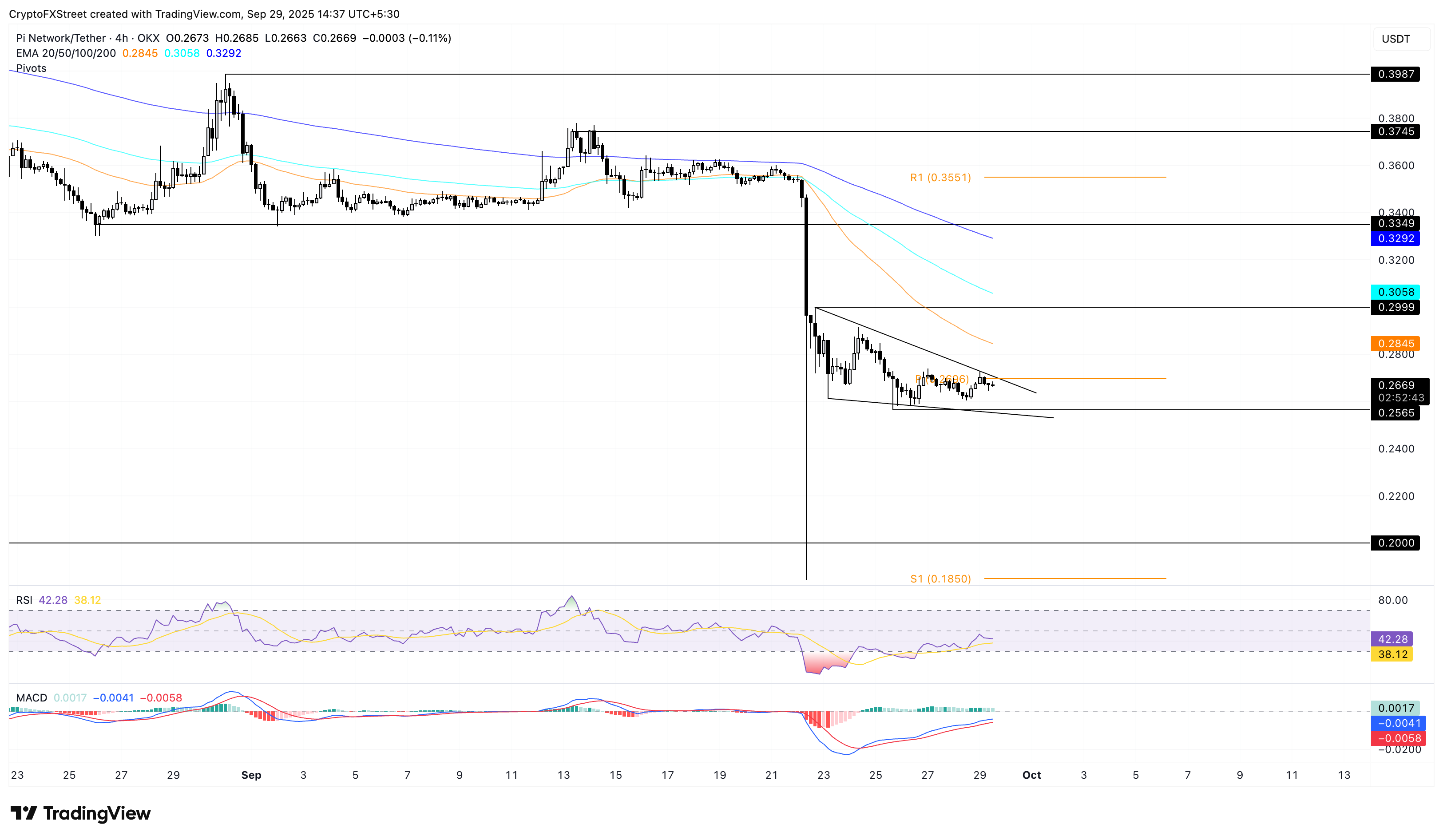Pi Network Price Forecast: PI risks further losses amid declining social interest
- The Pi Network's price edges lower by nearly 2% at press time on Monday.
- Pi Network prepares for 136 million tokens to be unlocked in October.
- The technical outlook holds a bearish bias as ̌social interest declines in the broader cryptocurrency market.
Pi Network (PI) edges lower by nearly 2% at the time of writing on Monday, marking a slow start to the week as the broader crypto market social interest declines.
PI token unlock amid muted market adds to sell-off risk
PiScan data reveals that 136 million PI tokens will be unlocked in October, which accounts for slightly over 1% of the circulating supply. This increase in supply could add to the selling pressure as the risk-off sentiment prevails.

PI token unlock statistics. Source: PiScan
Validating lowered interests, Joao Wedson, CEO of on-chain analytics platform Alphractal, shared a decline in the search volume of crypto-related keywords in Google Trends, which suggests that the retail investors are sitting on the sidelines.

Pi Network could retrace downward in a declining wedge
Pi Network reverses from the Pivot Point indicator level at $0.2696 on Monday, setting up a potential downcycle in a declining wedge pattern formed on the 4-hour chart. This downtrend could test Thursday's low at $0.2565.
If bears sweep below this level, PI could nosedive to the $0.2000 round figure.
However, the technical indicators on the same chart show that selling pressure is gradually decreasing, as the Relative Strength Index (RSI) remains above the oversold zone at 42. Additionally, the Moving Average Convergence Divergence (MACD) and its signal line hold a steady upward trend approaching the zero line, which indicates a decline in bearish momentum.

PI/USDT daily price chart.
Looking up, key resistance levels for PI are at the 50-period Exponential Moving Average (EMA) at $0.2845, followed by the $0.3000 round figure.
Bitcoin, altcoins, stablecoins FAQs
Bitcoin is the largest cryptocurrency by market capitalization, a virtual currency designed to serve as money. This form of payment cannot be controlled by any one person, group, or entity, which eliminates the need for third-party participation during financial transactions.
Altcoins are any cryptocurrency apart from Bitcoin, but some also regard Ethereum as a non-altcoin because it is from these two cryptocurrencies that forking happens. If this is true, then Litecoin is the first altcoin, forked from the Bitcoin protocol and, therefore, an “improved” version of it.
Stablecoins are cryptocurrencies designed to have a stable price, with their value backed by a reserve of the asset it represents. To achieve this, the value of any one stablecoin is pegged to a commodity or financial instrument, such as the US Dollar (USD), with its supply regulated by an algorithm or demand. The main goal of stablecoins is to provide an on/off-ramp for investors willing to trade and invest in cryptocurrencies. Stablecoins also allow investors to store value since cryptocurrencies, in general, are subject to volatility.
Bitcoin dominance is the ratio of Bitcoin's market capitalization to the total market capitalization of all cryptocurrencies combined. It provides a clear picture of Bitcoin’s interest among investors. A high BTC dominance typically happens before and during a bull run, in which investors resort to investing in relatively stable and high market capitalization cryptocurrency like Bitcoin. A drop in BTC dominance usually means that investors are moving their capital and/or profits to altcoins in a quest for higher returns, which usually triggers an explosion of altcoin rallies.



